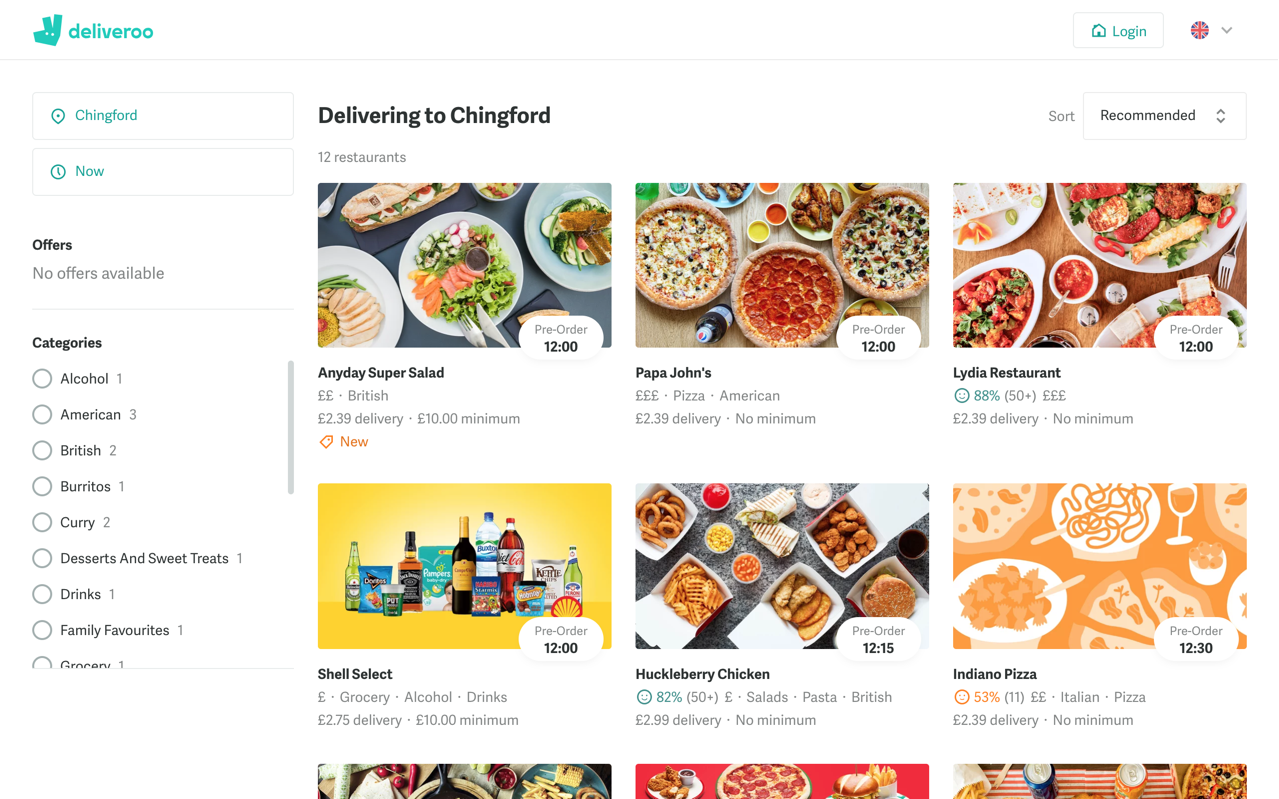By researching already existing take-away food delivery services, I was able to learn about my competition; what makes them successful, how they work and how I can use this information to create a successful brand of my own.
Online food delivery services are a relatively new and modern industry that's thriving, with £9.9 billion spent in 2017 on takeaway food. In addition, these services have created 41,000 new jobs, acting as a middle man between restaurants and their customers, providing delivery for places which don't traditionally deliver or have a delivery system in place. For example, you can order McDonald's on UberEats.
In my research I looked into two services in detail: Just Eat and Deliveroo (the top 2 best food delivery apps in the UK according to BusinessMatters), in particular their websites.
Just Eat
Founded by 5 Danish entrepreneurs in 2000 in Denmark, the company moved to the UK in 2000. In 2011, a joint venture was established in India. As of August 2018, Just Eat operates in 13 countries all across the globe. Their focus is on being informative and catering to a wider target audience. By sponsoring typically "British" things such as local football clubs, the company garners a regional feel, as well as loyalty from locals. For a restaurant to join Just Eat, they must have a license, and it costs £699 initially, with 13%-14% commission from orders. Just Eat currently have around 87,000 restaurant partners.

Upon opening the website, one would immediately notice the bright, bold colours in striking geometric shapes that are eye-catching and aesthetically pleasing. This colour scheme of red, green, blue and orange is consistent throughout all of Just Eat's adverts. The focal image is that of a pizza laid out on a table with various utensils and herbs around, certainly fitting with the "rustic charm" Just Eat has been praised for having. Overall, the website connotes a playful, exciting brand that provides good food and a great atmosphere.
In terms of how the service works, you enter your postcode and restaurants near that postcode come up, which you can then further filter with parameters such as cuisine, distance and ratings.
Star ratings are clearly displayed under each restaurant, as well as offers, delivery price, cuisine and the company logo. After picking a restaurant, it's a straightforward process of picking from the menu, paying for the order and choosing your preferred delivery time.
Deliveroo
For comparison, I will briefly examine Deliveroo's website, to showcase a company that is also very successful, but caters for a slightly different audience.

The website design is more minimalist and streamlined than Just Eat's, with a large focal image of a burger on a plain, minimalist colour background. Categories of food have also been created, with extreme close ups of food as the background bars and a title in a simple font.
The aesthetic is more "clean" and modern, with birds eye photos of laid-out food instead of company logos on the restaurant page. Deliveroo focuses more on providing delivery for upmarket or premium restaurants and takeaways.
This research has benefited me I learned about the history and growth of online food delivery services and what makes them so attractive to customers, in particular, the use of colour and design, and how this can inform the USP of a brand and establish its target audience. I also learned about the usefulness of creating a regional identity for a brand,so as to attract loyal local customers. By learning about how the whole process of ordering and delivery works, I can then depict that accurately in my adverts.
Sources Used:
-Just Eat Website
-Deliveroo Website
-Wikipedia
-Business Matters article
-LinkedIn article




































